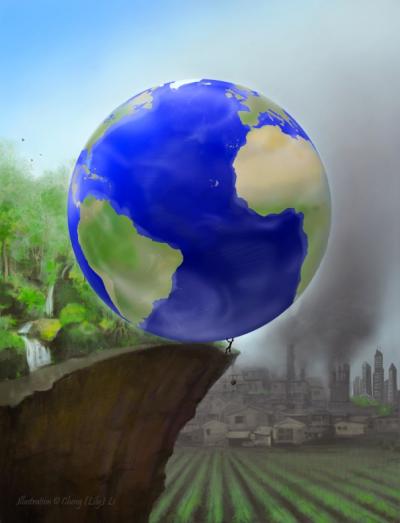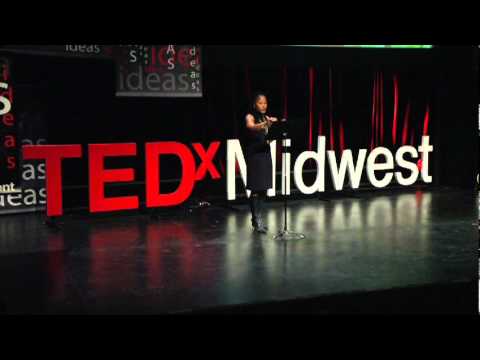 Sylvian Dousset, a mix media artist from France, uses his art to convey messages of peace, love, serenity and spiritual enlightenment. A look at his art and you are confronted by the merger of digital to analog, human to animal, tribal to modern.
Sylvian Dousset, a mix media artist from France, uses his art to convey messages of peace, love, serenity and spiritual enlightenment. A look at his art and you are confronted by the merger of digital to analog, human to animal, tribal to modern.
Its difficult to place Sylvian’s art into a particular category, as he himself puts it, like his own reality his art is an extension of his evolutionary process which is still growing.
His goal is to create a portal that will open the doors of consciousness for the viewers where his/her inner self resides, enable the unlocking of the “cosmic child”. Lets get to know more about Dousset’s journey as an artist…
When did you discover your passion for art and how?
I have always been drawing, as long as I can remember, since I was a child. My Grandfather used to teach me basic drawing as a kid and I was fond of history books, always drawing and imagining things from what I saw.
My passion for Art grew year after year and as I was very sensitive and contemplative, I guess that drawing was the best way for me express myself, living in my own world. After school graduation I naturally went to an Art school in Angouleme, France. At that time I wanted to be a painter but I was always interested in all the new things they had to offer there, so I tried many things like learning how to do comics, sculpting, photography and so on.
Then when the time came to work for a living and I put aside the “I wanna be a true artist, free of all form of restraint” part of myself to become a digital artist, working for video-game companies…And life went on, I forgot that at first I dreamt of being a painter.
It came back full mode years later…I guess I was tired of being told what I had to draw or create, even if it was fun to participate in video-game developments. I also came into a deep spiritual awakening phase and it became more and more obvious that Art was the real path I wanted to follow in order to really find and realize myself in. So here I am!
What is your art, is there a specific genre and how do you create it?
I don’t know yet what my art really is, as it is an evolutive, intuitive and spiritual process. There is no specific genre, it is a fusion of oniric/fantasy/abstract and all the things I like…I guess I’m trying to make a cross over of two separate worlds: “art” and “illustration”…It’s a work in progress, a journey.
Right now I mostly use acrylics on canvas and ink on paper that I mix with digital work to make my art but I am still interested in any kind of media like working with wood, clay, metal and so on. The creative process is an intuitive one, I really try to quiet my mind and listen to a higher source of inspiration, most of the time, when I start a piece I do not know how I will do it and what it will look like once finished.
I could do a more rational/technical work but it is not at all the path or direction I am looking for. I really want to achieve a process of creation where I am just a tool and where a higher source is the creative one who guides my hand through the steps of realization for each piece.
Everything can be a potential source of creativity for me, when you are in the “listening mode”, ideas can come from anywhere or anything, it comes from all the things I love to watch, all mixed together : History, art, nature, movies, comics, illustration, video games, music, architectures etc.
Mostly, I seem to be obsessed by combining the past and the future together through the mythological and archetypal “bestiaries” from the different cultures all around the world. Its like wanting to create my own parallel universe where all forms and period of time were recombined together in a science-fiction world. I don’t know if that even makes sense but that is the adventure I am on.
 Is there a message that you wish to communicate through your art and what is it?
Is there a message that you wish to communicate through your art and what is it?
I would like my art to convey messages of peace, love, serenity and spiritual enlightenment but right now I’m still conversing with my old demons and the visual results of my art are mostly expressing that I guess : the journey from darkness to light through pain and silent screams. I am not trying to show to the viewer just a cool picture/illustration as I was doing before.
My goal is to make each time a different image like a key or a portal, something that will impact enough the viewer’s consciousness to access/open the door where resides his/her inner self, creativity, imagination, the place where the “cosmic child” is locked, the center of energy hiding from the conformity of our modern civilization, the “real you”.
That is why I do not respect the rules of classic illustration like composition/depths/perspectives and so on, I intend to show you an image that “hack” directly the deepest levels of your inner self.
I realize how pretentious/crazy, I probably sound but that is what I am trying to accomplish here in my artwork. As I continue my journey, I hope to be able to express it in a more peaceful, serene ways as I reckon that right now, most of my work is kind of dark.
Which is your favorite piece of work and why?
I do not have a favorite piece, really…so I would answer that my favorite piece is the next one, the one that don’t exist yet, the one that is still to be created. I am part of those artists that are reluctant to take a look at their production once it’s done, always searching to do something more accurate with their vision of it.
You also do metal sculptures? What are your various art forms you work with?
I would love to do metal sculptures but right now, I haven’t the skills nor the means to do it right now. I plan anyway to start soon to do some with clay and with 3d softwares. it will come in good time. As I was saying above, I mainly use acrylics on canvas and inks on papers that I mix with digital processing which are the tools I feel the most comfortable with but I’m also experimenting with plastic, wood, clay and metal, trying to make objects like boxes, masks and so on. Working on 3D models should be the natural next step for now.
 What is your opinion on the times we live in?
What is your opinion on the times we live in?
Since as a kid, I always felt like something was wrong about the society’s system we are forced to live in. This is my world but this not my society, as for me, everything in it is inverted and/or corrupted. I do believe that living in this beautiful planet should be a constant amazement filled with peace, love and joy, knowledge and wisdom…when it is really a living hell for many to many of us, or at least a place filled with sadness, frustration, anger and suffering, ignorance and stupidity.
As for the time we are living in, I believe that, as the elite ruling this world are making their best efforts to enslave us into a form of reality, where most of us are forced to be extremely unfulfilled low version of themselves, the opposite natural reaction of the people is a slow worldwide awakening into a higher form of consciousness, thanks to the Internet.
It appears to me that the austerity/crisis/debt and all the banking and monetary system is an obvious fraud and that they are pushing us slowly to some form of rebellion/revolution where they will kill many of us and use it to justify the appliance of a new set of tyrannic rules to bring in their “NWO” plan.
What we should do is use only pacific ways to fight back like, for example, a worldwide total full on strike movement where the vast majority of us would stop working at the same time, blocking all the system at once and then imposing new constitutions written by the people, for the people. Call me crazy!
Check Out Sylvian Dousset’s pages on facebook:






















